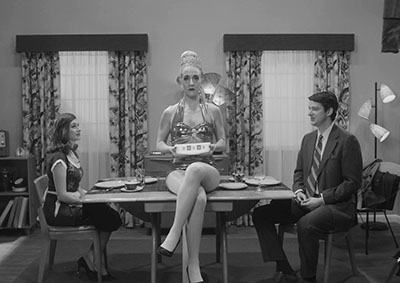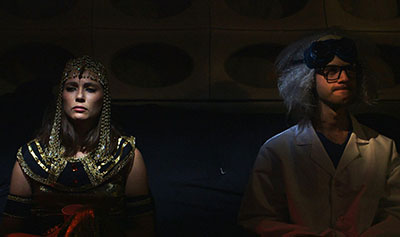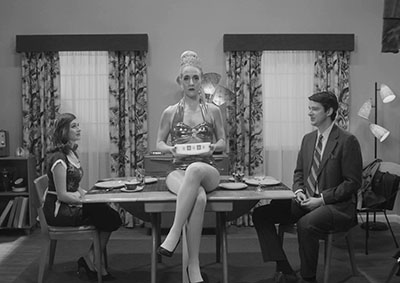Stevenson University will host the premiere of two original films on March 1 from 6-9 p.m. in the School of Design Soundstage (OMN).

The first film, “Commercial for the Queen of Meatloaf,” is a short commercial directed by Dina Fiasconaro, associate professor of film and moving image. It is a surrealist take on a 1950s commercial, where a bored housewife prepares a meatloaf in an attempt to invigorate her marriage. However, an incarnate of the “Queen of Meatloaf” emerges from the kitchen and wreaks mayhem on the commercial set.
Fiasconaro describes her film as a combination of “Far from Heaven,” “Living in Oblivion,” “Jeanne Dielman and “Attack of the 50 Foot Woman,” with a little bit of David Lynch sprinkled in.
Fiasconaro also hopes that, because the film is comedic in nature, viewers will be entertained and amused. She hopes the film will also “spark dialogue and questions regarding the more thematic aspects of it such as gender roles, representation of women in the media, and the commodification of the female body.”
“Additionally, a handful of Stevenson students were selected to work on the film with us. I hope that it shows the power of collaboration and perhaps helped to demystify what working on a professional film set entails,” she said.
To attract attention to her film, Fiasconaro believes that marketing and distribution falls into the hands of the filmmaker in terms of gaining an audience. Having a presence on social media to communicate and network is key. Fiasconaro believes her work is a success if it elicits any type of response from the audience, regardless if it is positive or negative, that sparks questions, dialogue and makes viewers take on a more active role in their experience in watching films.

The second film, “Corpse,” is directed by Christopher Ernst, assistant professor of film and moving image. It is a feature adaptation of Robert W. Chambers’ The King in Yellow, an anthology of classic weird fiction. The film tells the story of a group of young entrepreneurs who encounter a forbidden book that causes readers to go insane. To capture the hysteria the book inflicts on the entrepreneurs, Chambers uses alluring imagery and atmospheric sounds to immerse the audience into the film.
The inspiration for Ernst in his feature film is the communication of ideas and concepts that defy language. For Ernst, filmmaking is a personal process and rooted in the realm of imagination.
Ernst hopes watching his film is different for every person. “I think the cinematic form possesses and indescribable power to affect a non-linguistic state of emotion and consciousness in the viewer and this particular film is much more about setting a mood than achieving a measurable outcome,” he said.
Ernst added that he is in no way embarrassed to admit that he’s a poor businessperson when attracting attention to his feature film. In an ideal world, he said, his film would speak for and promote itself. However, he does not believe that is the world we live in. To attract attention to his film, Ernst wants to try his best to get his film noticed by trying to network with other people who may be stronger in marketing techniques.
“Much like one of my filmmaking role models, David Lynch, often states, “I would urge people who watch [my] film not to labor in ‘making sense’ of anything in terms of me, the filmmaker, achieving a goal or making a statement, but rather to try and let their personal reactions and emotions dictate what the film ‘means.’”


























































